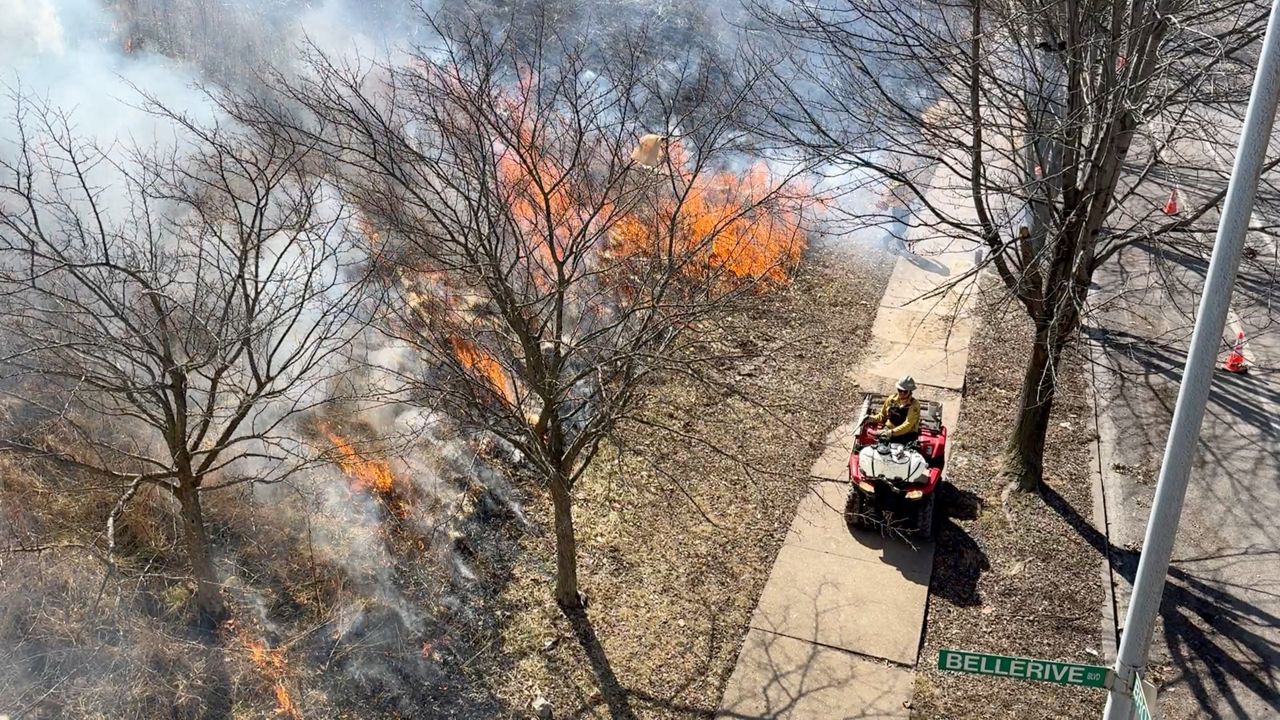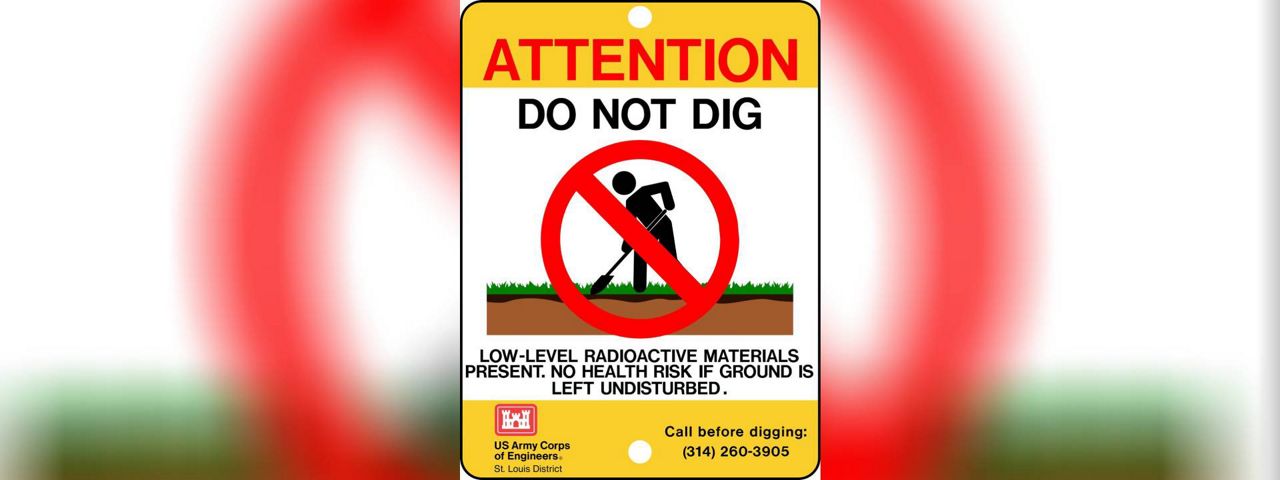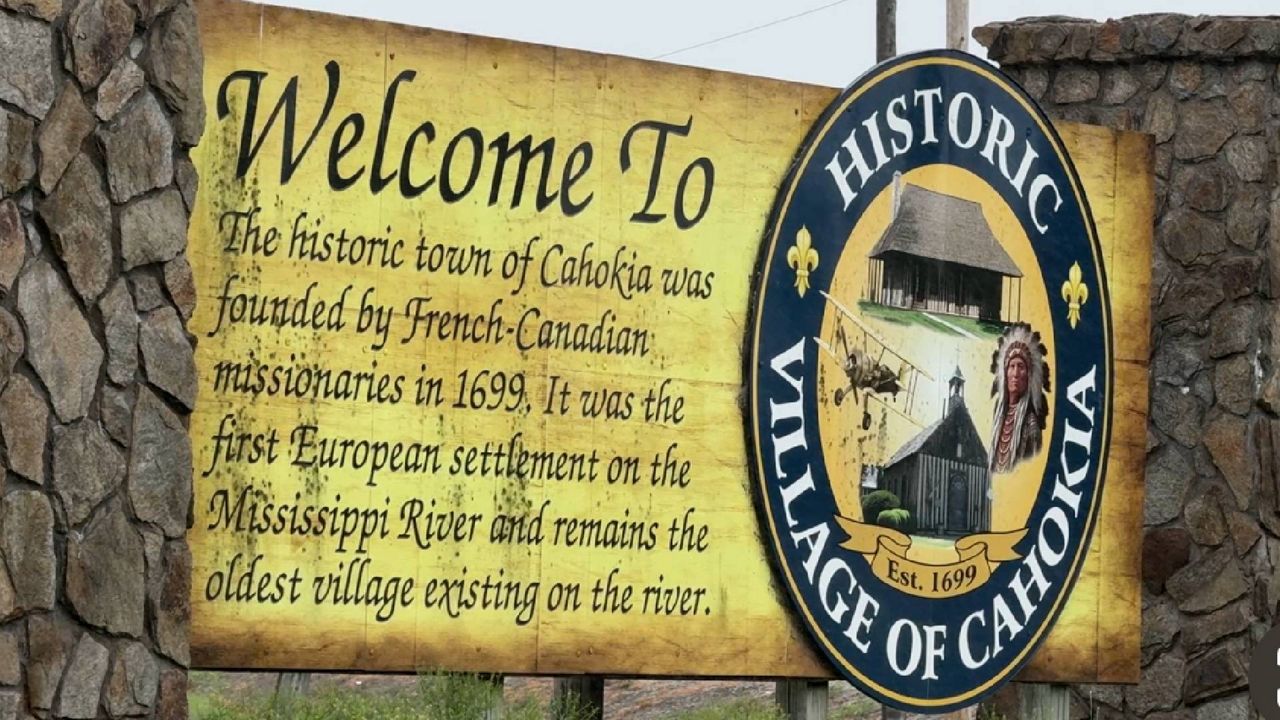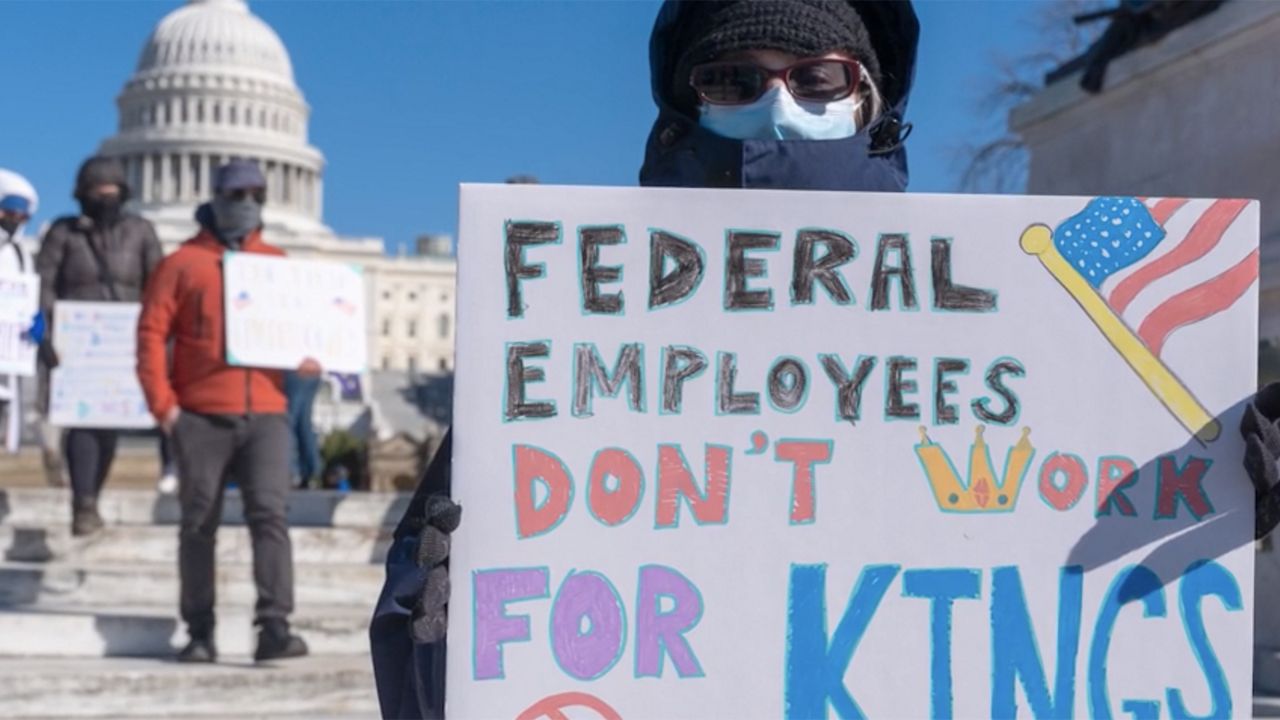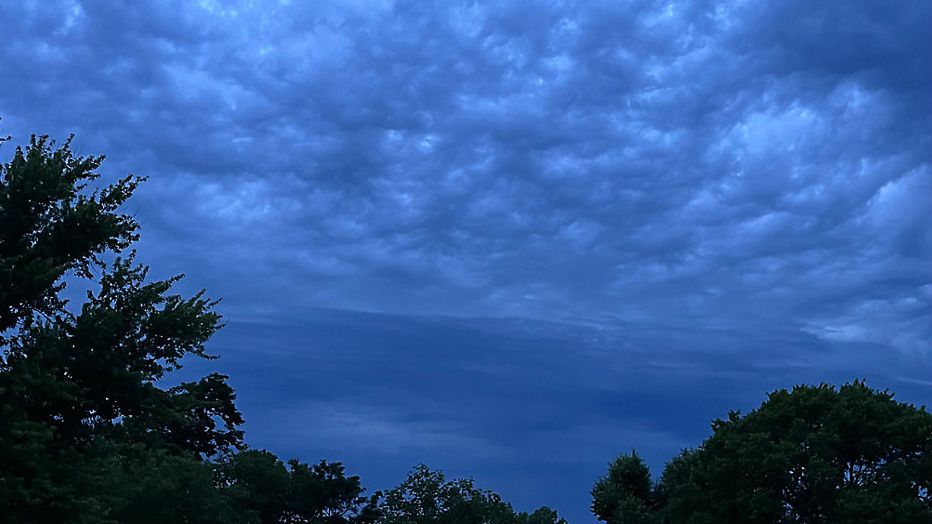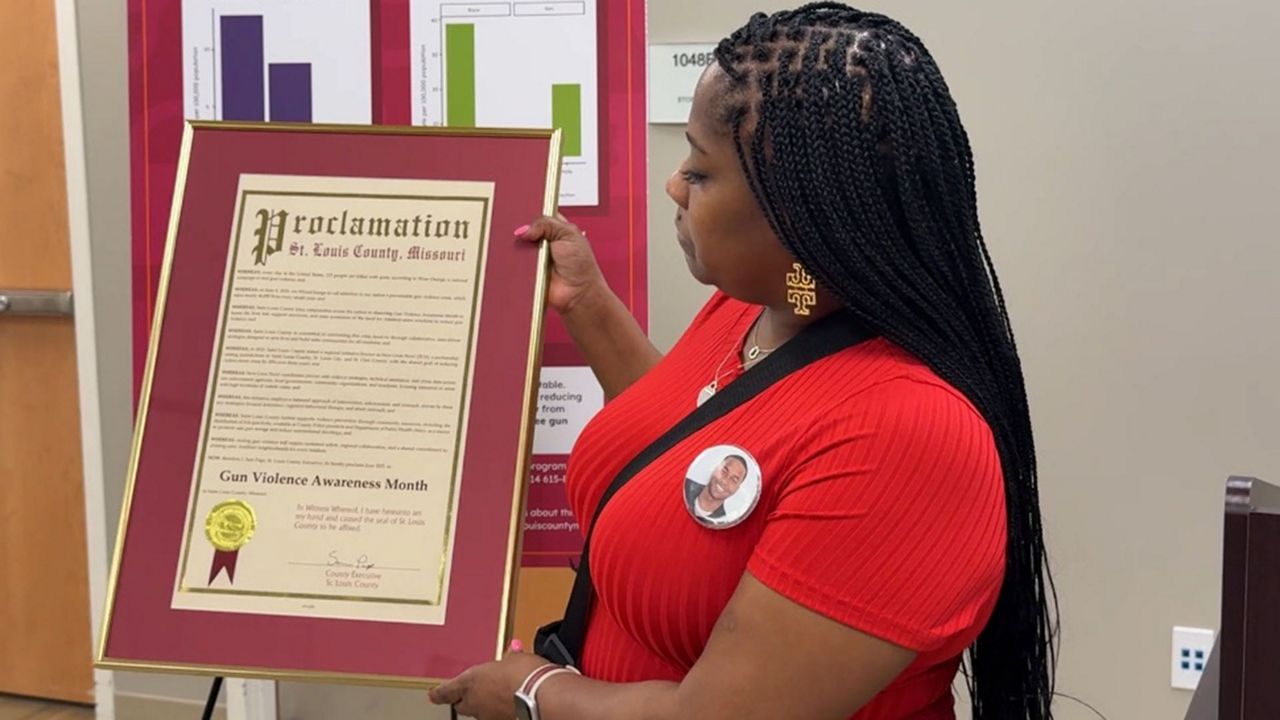ST. LOUIS–Smoke reached the skies of St. Louis over Bellerive Park and Dickman Park Tuesday. The Forestry Division performed prescribed burns in the prairie areas of each park. While Forest Park has annually seen controlled burns, this was the first one for Bellerive Park.
“That's partly why this is so exciting today,” said Erink Shank, a wildlife biologist for the Missouri Department of Conservation. “The more we learn about the prescription of fire and the application of it on the landscape, the more we're able to tailor burn plans. When the conditions are right, get into urban areas and actually burn some of these landscapes. So urban burning is really relatively new in many cities, but we're becoming much more skilled at applying it.”
The burn sets back woodier vegetation and clears out fire intolerant invasive species such as bush honeysuckle. Burns also push carbon into the ground and blackens the soil which warms up quickly.
“As spring warms up, these plants will come. These prairie plants that are native to Missouri will come back kind of gangbusters and it'll be a real healthy system.”
For those worried about animals during these burns, Shank says the birds take off and most other animals remain burrowed well beneath the fire this time of year.
“Some of the insects that overwinter in the pits of the plants, you can still see there are stems out there remaining. So we kind of consider that refuge for some of those overwintering critters.”
The burn project is a partnership between the Saint Louis City Department of Parks: Recreation and Forestry, Missouri Department of Conservation, Green City Coalition, Quail Forever Pheasants Forever (QFPF). A QFPF habitat strike team commissioned by the Department of Conservation conducted the burn.
As more controlled urban burns go without issue like today’s, the department says it opens the door for more opportunity of other burns furthering the mission of conserving Missouri life.
Below are maps where the burns took place.




